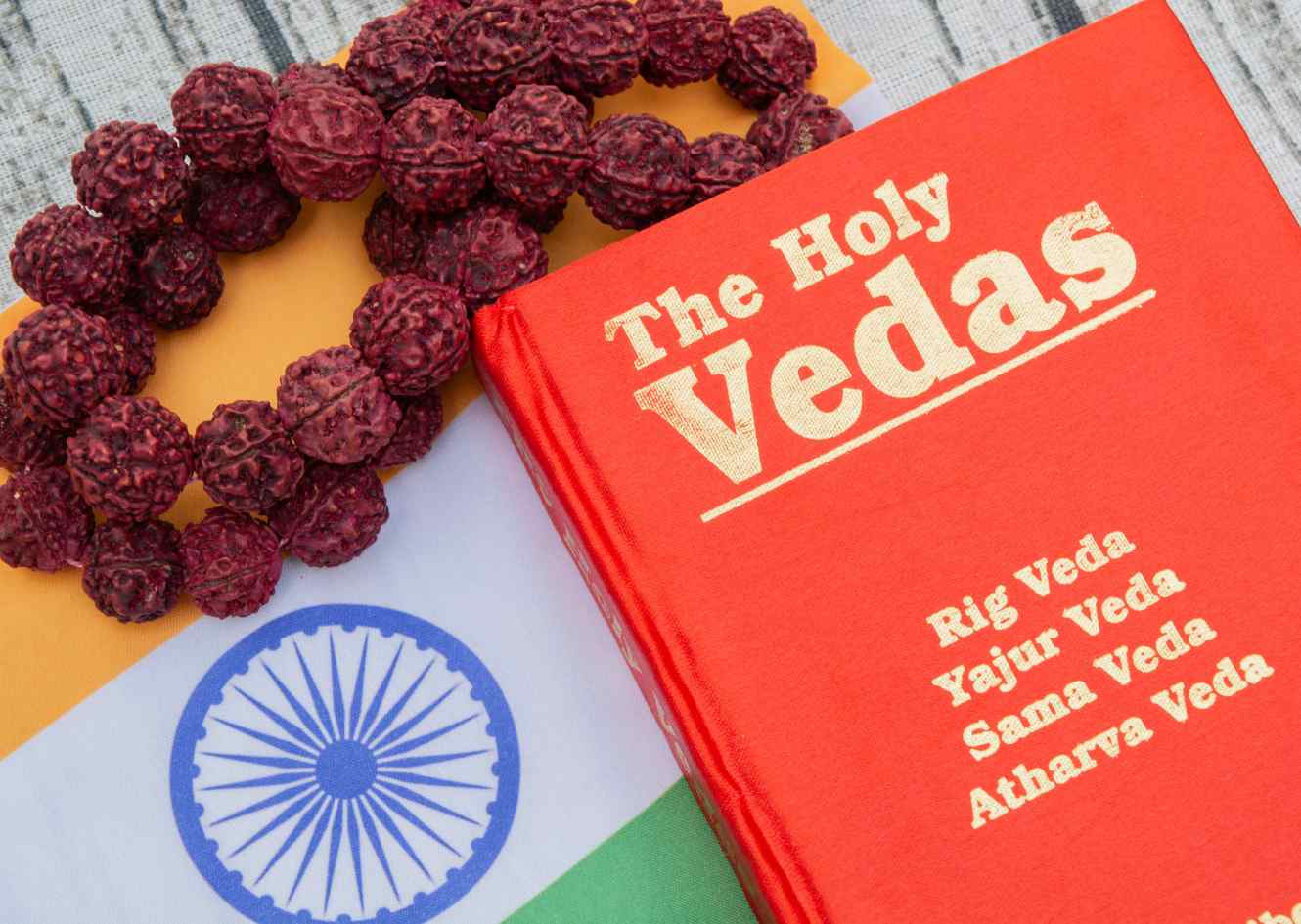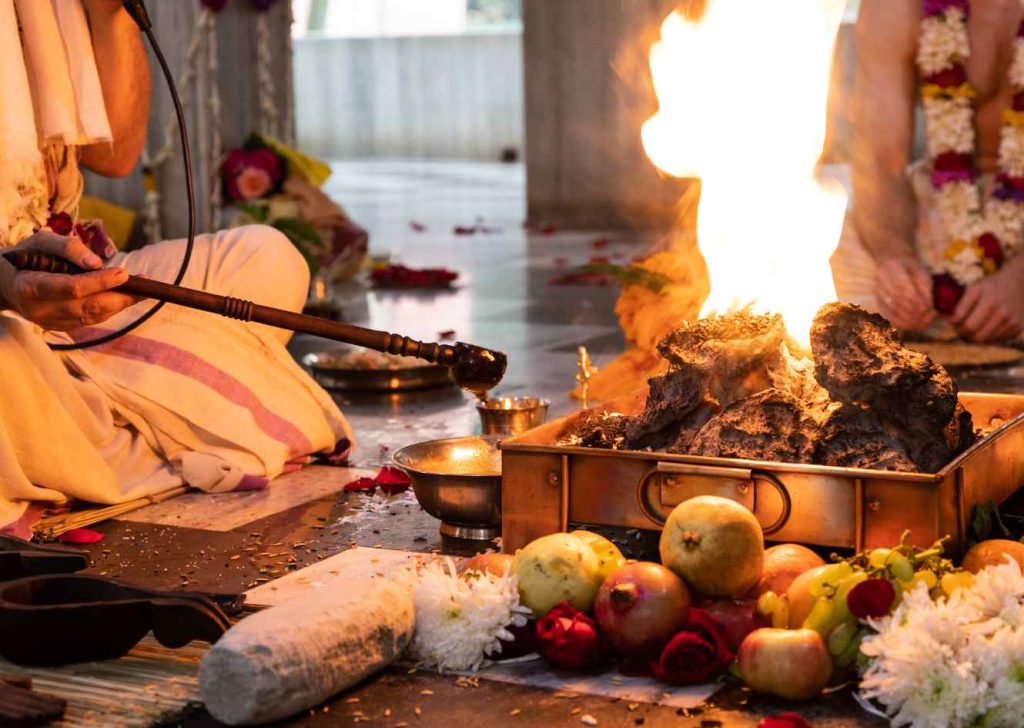The Vedas Are The Most Important Scriptures

The Vedas, often referred to as the foundation of Indian spirituality and the bedrock of Hindu philosophy, are a collection of ancient religious hymns composed in Sanskrit. Their origins trace back to the Indian subcontinent, making them among the oldest known sacred texts in the world.
“Veda” is derived from the Sanskrit word “Vid,” meaning knowledge. Traditionally, the Vedas are believed to be “Apaurusheya,” which means they were not authored by any individual but were revealed to the ancient seers or “rishis” during deep states of meditation. These rishis transmitted this sacred knowledge orally through generations, ensuring its preservation before it was eventually written down.
The Vedas are ancient Indian scriptures that form the foundational bedrock of Hindu philosophy and spirituality. They are not just religious texts but also encompass a vast expanse of knowledge ranging from rituals and ceremonies to meditation, morality, and metaphysics. The essence of the Vedas is profound and multifaceted, but a few key themes can be highlighted:
One of the overarching themes in the Vedas is the concept of ‘Rta,’ which refers to the cosmic order or the universal law that governs the universe’s functioning. Everything in nature, from the changing seasons to human conduct, is believed to be governed by this divine order. Living in alignment with Rta is a way to live harmoniously with the universe.
The Vedas emphasize the interconnectedness of all existence. While many gods and goddesses are described in these scriptures, they are often considered manifestations of the same ultimate reality or Brahman. The Vedas are not just about ritualistic knowledge but also wisdom that can lead to self-realization.
Ritualistic sacrifices or ‘Yajnas’ are significant in the Vedic texts. These sacrifices, which could range from offerings to deities to intricate rituals, were believed to ensure the maintenance of the cosmic order. Over time, the idea of sacrifice also evolved to encompass inner sacrifices, like the renunciation of ego.

The Vedas contain hymns that speak of the human aspiration to transcend death and attain immortality, not necessarily in a physical sense but as a realization of the immortal soul or Atman within.
While directly articulated in later scriptures, the foundations for the four main pursuits of human life—Dharma (duty), Artha (prosperity), Kama (desire), and Moksha (liberation)—can be traced back to the Vedic worldview.
The Vedas showcase a deep reverence for nature. Natural elements like fire (Agni), wind (Vayu), and soma are personified and worshipped. It underscores the intrinsic bond between humans and nature and emphasizes living in harmony with the natural world.
The Vedas And Sanātana Dharma
Sanātana” means eternal, timeless, or ageless in Sanskrit, while “Dharma” can be translated as duty, righteousness, law, or the ethical path. In the broadest sense, Sanātana Dharma signifies the eternal cosmic law or the timeless ethical path.
The Vedas are the foundational scriptures of Sanātana Dharma. They encapsulate the spiritual, philosophical, and ritualistic roots of this tradition. All subsequent Hindu scriptures, like the Upanishads, Puranas, Mahabharata, Ramayana, and various Agamas and Tantras, draw their authority and essence, directly or indirectly, from the Vedas.
The ritualistic practices, ceremonies, and rites of passage (samskaras) prevalent in Sanātana Dharma, such as the Yajnas (fire rituals), are derived from the Vedas, particularly the Brahmanas and the Samhitas. The philosophical underpinnings of Sanātana Dharma, which later evolved into various schools like Vedanta, Samkhya, and Yoga, have their roots in the Vedic literature, particularly the Upanishads, which are the concluding parts of the Vedas.
The Four Vedas
The Vedas are broadly classified into four primary collections:
Rigveda: The oldest of the four, it primarily consists of hymns praising various deities. It provides insights into the early Vedic civilization’s cosmology, philosophy, and societal structure.
Samaveda: This Veda is a collection of melodies and chants. Many of its verses are derived from the Rigveda but are arranged to facilitate their chant during rituals and ceremonies.
Yajurveda: Distinctive for its prose mantras, the Yajurveda is essentially a guidebook for priests to execute various rituals. It delineates the procedures for sacrifices and offerings.
Atharvaveda: Unlike the other three, the Atharvaveda encompasses hymns, charms, and spells with a more diverse set of topics, ranging from daily life rituals to remedies for illnesses.
Brahmanas, Aranyakas, and Upanishads
Beyond these primary collections, each Veda has its associated texts – Brahmanas (ritualistic commentaries), Aranyakas (meditative passages), and Upanishads (philosophical teachings centered around the inner, spiritual knowledge). The Upanishads, in particular, delve deep into metaphysical discussions and lay the foundation for later philosophical schools, such as Vedanta.
The Vedas encapsulate a wide spectrum of knowledge, from the intricacies of ritualistic practices to profound spiritual wisdom. Their teachings have shaped India’s religious, philosophical, and cultural ethos for millennia. Over time, various schools of thought, both orthodox and heterodox, have interpreted the Vedic texts, giving rise to a rich tapestry of Indian philosophy and spirituality.
The Vedas are not merely ancient texts but living traditions that continue to influence India’s spiritual and philosophical landscape and beyond. Their timeless wisdom offers insights into the nature of existence, the cosmos, and the interplay between the individual and the universe.
